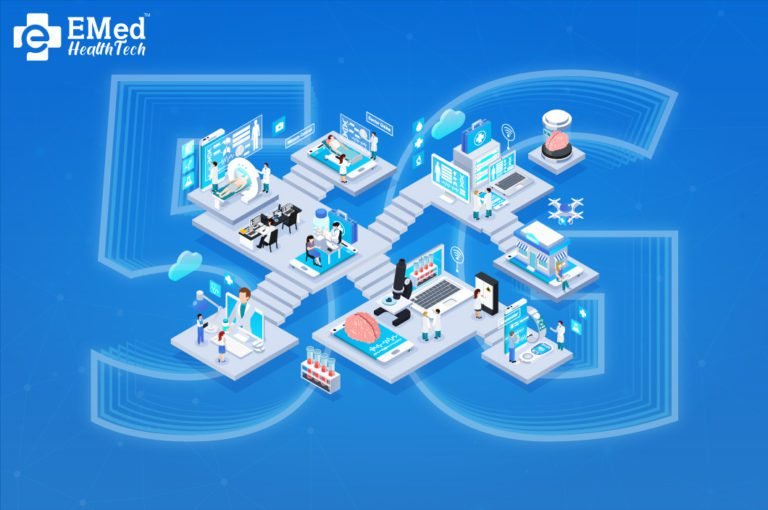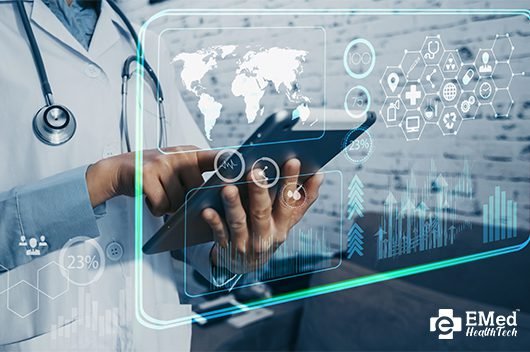Ami Kothari
Healthcare has been in the eye of the digital storm for a while now. No other industry has undergone as much change over the last few decades as healthcare.
The promise of digital transformation is making healthcare reliable and easy for everyone involved. And, the good news is that it is being fulfilled at an incredible pace now — one of the few silver linings to emerge from the COVID-19 crisis.
With the COVID-19 pandemic, everyone — from the masses to the governments — has witnessed the power of the digital first hand. And, while the digitization of healthcare has been an ongoing process for quite some time, it has lately revealed its benefits more strongly than ever before.
The widespread adoption of digital healthcare IT solutions and services — although still far behind the ideal — is poised to be a win-win situation for everyone in the near future. Read on to find out how it works out for the best for both the consumers and the providers of healthcare alike.
The What and Why of Digital Healthcare
Before the development of the internet, computers were limited to the hands of a few experts and enthusiasts. The primary uses of large industrial computers were to perform complex calculations while individual enthusiasts would use them to become a part of rising technology.
The advent of the internet, however, changed the ballgame completely. We could now use computers to exchange information through email, live chat, and message boards. The era of smartphones and consistent increase in internet speeds worldwide made features like video calling accessible to the masses. This has spurred digital healthcare practices like Telemedicine, doctor app, and medicine delivery app which have enabled patients and doctors to communicate without the need for physical travel.
In the last decade or so, the fields of medicine have begun leveraging these technologies to provide affordable access to healthcare wherever possible. As recently as 2019, the digital healthcare market around the globe exceeded 170 billion U.S dollars and is growing at a robust rate of 25% CAGR.
Ushering Into a New Era of Healthcare Access
Patients looking to get world-class healthcare services do not necessarily need to step out of their homes. You can’t just schedule an appointment through Digital healthcare services, but engage in a consultation with your doctor no matter the distance. While a few decades ago, you had to travel far and wide to get world-class medical assistance, it is now available at the touch of a button.
Patients with chronic or multiple health conditions can keep consistent contact with caregivers and healthcare providers, which can be life-saving in many situations.
Healthcare tech products and services have widened their reach for doctors and healthcare providers like never before. With digital applications, they can provide consultations online and keep meticulous records of patients with ease. The history of each patient’s medical conditions, treatments administered, and other critically relevant data can be recorded, shared, and studied without the need to maintain heaps of files.
The Right Technology
While digital healthcare technologies were already growing steadily, the pandemic accelerated their growth rapidly. From the patients and doctors to the paramedics and government agencies, all have recently witnessed how transformative healthcare software solutions and services can be.
What it Means for Patients
Digital health tools like Telemedicine software are game-changers for public health in that it provides fast and affordable healthcare access to anyone seeking it. No matter where you are, all you need is a device and an active internet connection.
Despite massive data and predictive models, thinkers, institutions, and governments could not predict the COVID pandemic and its after-effects. With early diagnosis and rapid consultation, telemedicine has saved countless lives in these tough times and promises to do so in the years to come.
What it Means for Healthcare Professionals
With easy access to doctors, healthcare products and services hold tremendous potential, particularly for lower-income countries. Countries such as Brazil and Nigeria have begun reaping the benefits from this already, with AI-powered software that diagnoses diseases early on, letting doctors intervene as early as possible.
While patients can avoid the bottlenecks that reduce their access to quality healthcare, healthcare professionals can make sure their services can save more patients than ever.
What it Means for Healthcare Institutions
Recent developments have proven that the time for adopting telemedicine software is better than ever. Data suggest that while less than 15% of consumers preferred using telemedicine in 2019, over 75% are highly likely to use these services from now on, a staggering 38-times growth in just two years.
While this favorable stance from customers may be attributed to the COVID-led restrictions and the subsequent cancellation of in-person doctor appointments, it is noteworthy that this survey reports 74% of customers reported a high level of satisfaction using digital healthcare services.
Areas of Challenge and Opportunity
While digital healthcare is full of promises, it’s not without its own set of challenges. The results of a recent survey show that the top three roadblocks to the adoption of digital health tools are cost, data security and privacy concerns, and lack of integration with the existing systems.
If we are to harness the true potential of digital healthcare, we need to tackle these challenges head-on. Digital health sponsorships and better funding practices can encourage health facilities to transition.
Regional or national databases that secure the information and medical history of individuals from falling into the wrong hands are non-existent in developing countries and need to be worked upon. We need stronger laws and regulations to be put in place to ensure data security and patient privacy, but specific to the local needs.
High-speed and reliable internet services that provide the basic infrastructure to healthcare still need to be developed in low-income countries.
Health trackers and wearable variable devices have come far from being bulky professional-only devices but still constant improvement in their accuracy and range of expertise. Technologies like Machine Learning and Artificial Intelligence can make advanced healthcare more scalable and mass adoption easily achievable.
While efforts in all these areas have gained momentum, we are not there yet. We still have a long way to go before telemedicine and other digital health technologies become truly transformative for healthcare consumers and providers. With private and public sectors working hand in hand to achieve this goal, the future can be full of positive developments.
EMed HealthTech is doing its bit in helping accelerate this development through its enterprise health app and software applications, telemedicine software, medicine delivery app, doctor application, healthcare ERP and other custom solutions that help healthcare providers connect with patients.
Whether you are a local clinic or a large multinational healthcare brand, our tailored software solutions can help you explore the untapped potential of this massive market.
Related posts

Healthcare IT
How Chat GPT Can Help in the Healthcare Industry?
Here is How Chat GPT Can Help in the Healthcare Industry?
Read more
Digital Healthcare
10 Benefits of 5G Launch on Healthcare in India
10 Benefits of 5G Launch on Healthcare in India
Read more
Healthcare Digital Transformation
How Digital Health Can Help Developing Countries in Advancing Health System?
How Digital Health Helps Developing Countries in Advancing Healthcare?
Read more







